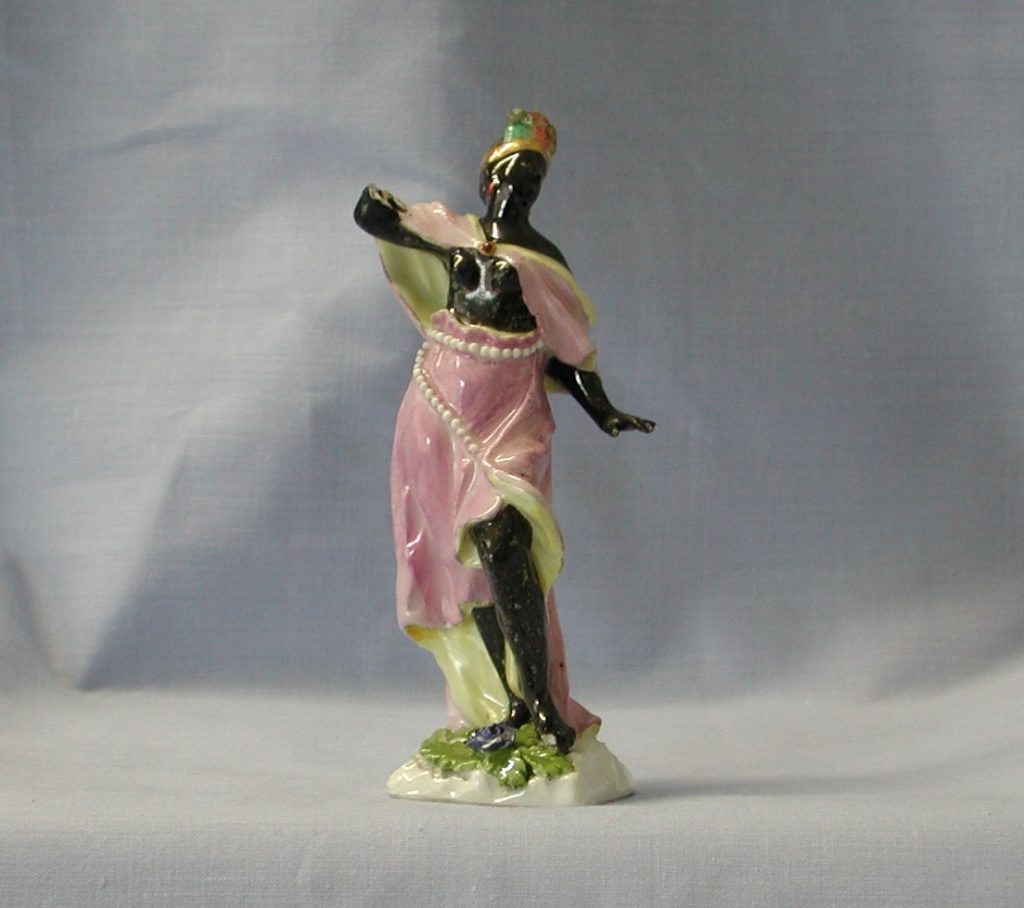The first European hard-paste porcelain was produced in the royal factory of Meissen, near Dresden, in 1710. The Gallery’s founder was an ardent collector of Meissen porcelain and these early ‘Blackamoor’ figurines form part of its substantial assortment.
Known as ‘white gold’, Meissen porcelain was a highly-prized commodity, inevitably imbued with European prejudices about race.
If eighteenth century Meissen designs adapted East Asian motifs, they also provided fantastical representations of the ‘exotic Blackamoor’, costumed in gilded rococo finery.
Art historians (such as Adrienne L. Childs) argue that such European depictions of the ‘Blackamoor’ conflated black Africans with Muslims and Arabs (i.e. the ‘Moors’), disguising the brutality of the trans-Saharan Arab slave trade through Orientalist spectacle.
Richard Glynn Vivian Bequest, 1911


